View in other NatureServe Network Field Guides
NatureServe
Montana
Utah
Wyoming
Idaho
Wisconsin
British Columbia
South Carolina
Yukon
California
New York
Arroyo Bluet - Enallagma praevarum
State Rank Reason (see State Rank above)
The Arroyo Bluet damselfly is currently listed as an "S3S5" species of potential concern in Montana because they are potentially at risk because of limited and/or declining numbers, range and/or habitat, even though it may be abundant in some areas. This rank was based on limited collections, but this species is more widespread that the rank implies.
General Description
We do not yet have descriptive information on this species. Please try the buttons above to search for information from other sources.
Species Range
Montana Range
Range Descriptions

 Native
Native
Range Comments
The Arroyo Bluet is a damselfly of the central plains and southern U.S: Arizona (SNR), California (SNR), Colorado (S4), Kansas (SNR), Montana (S3S5), Nebraska (SNR), Nevada (SNR), New Mexico (SNR), North Dakota (SNR), Oklahoma (S4?), South Dakota (SNR), Texas (SNR), Utah (SH), Wyoming (SNR). In Montana it is found more prevalently in the prairie regions.
Observations in Montana Natural Heritage Program Database
Number of Observations: 116
(Click on the following maps and charts to see full sized version)
Map Help and Descriptions
Relative Density
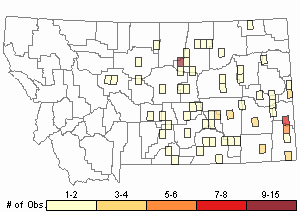
Recency
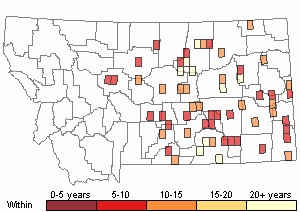
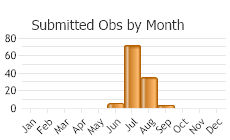
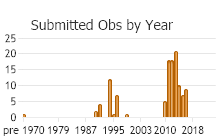
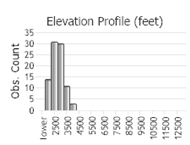 (Observations spanning multiple months or years are excluded from time charts)
(Observations spanning multiple months or years are excluded from time charts)
Habitat
The habitat of Arroyo Bluets includes slow streams, lakes and ponds as well as impoundments (Westfall and May 1996, Paulson 2009).
National Vegetation Classification System Groups Associated with this Species
Wetland and Riparian
Alkaline - Saline Wetlands
Peatland
Wet Meadow and Marsh
Food Habits
Larvae feed on a wide variety of aquatic insects, such as mosquito larvae, other aquatic fly larvae, mayfly larvae, and freshwater shrimp.
Adult- This damselfly will eat almost any soft-bodied flying insect including mosquitoes, flies, small moths, mayflies, and flying ants or termites.
Reproductive Characteristics
Male Arroyo Bluets are present in emergent vegetation. Females are not usually observed unless in tandem with male. Pairs oviposit in floating vegetation and females can be released to continue oviposition below the waterline (Paulson 2009).
Stewardship Responsibility
References
- Literature Cited AboveLegend:
 View Online Publication
View Online Publication Westfall, M.J., Jr. and M.L. May. 1996. Damselflies of North America. Scientific Publishers, Gainesville, Florida. 649 pp.
Westfall, M.J., Jr. and M.L. May. 1996. Damselflies of North America. Scientific Publishers, Gainesville, Florida. 649 pp.
- Additional ReferencesLegend:
 View Online Publication
View Online Publication
Do you know of a citation we're missing? Acorn, J. 2004. Damselflies of Alberta: flying neon toothpicks in grass. Edmonton, Alberta: University of Alberta Press. 156 pp.
Acorn, J. 2004. Damselflies of Alberta: flying neon toothpicks in grass. Edmonton, Alberta: University of Alberta Press. 156 pp. Dunkle, S.W. 2000. Dragonflies through binoculars: A field guide to dragonflies of North America. New York, NY. Oxford University Press. 266 pp.
Dunkle, S.W. 2000. Dragonflies through binoculars: A field guide to dragonflies of North America. New York, NY. Oxford University Press. 266 pp. Paulson, D.R. 2009. Dragonflies and Damselflies of the West. Princeton University Press, Princeton. 535 pp.
Paulson, D.R. 2009. Dragonflies and Damselflies of the West. Princeton University Press, Princeton. 535 pp.
- Web Search Engines for Articles on "Arroyo Bluet"
- Additional Sources of Information Related to "Insects"





